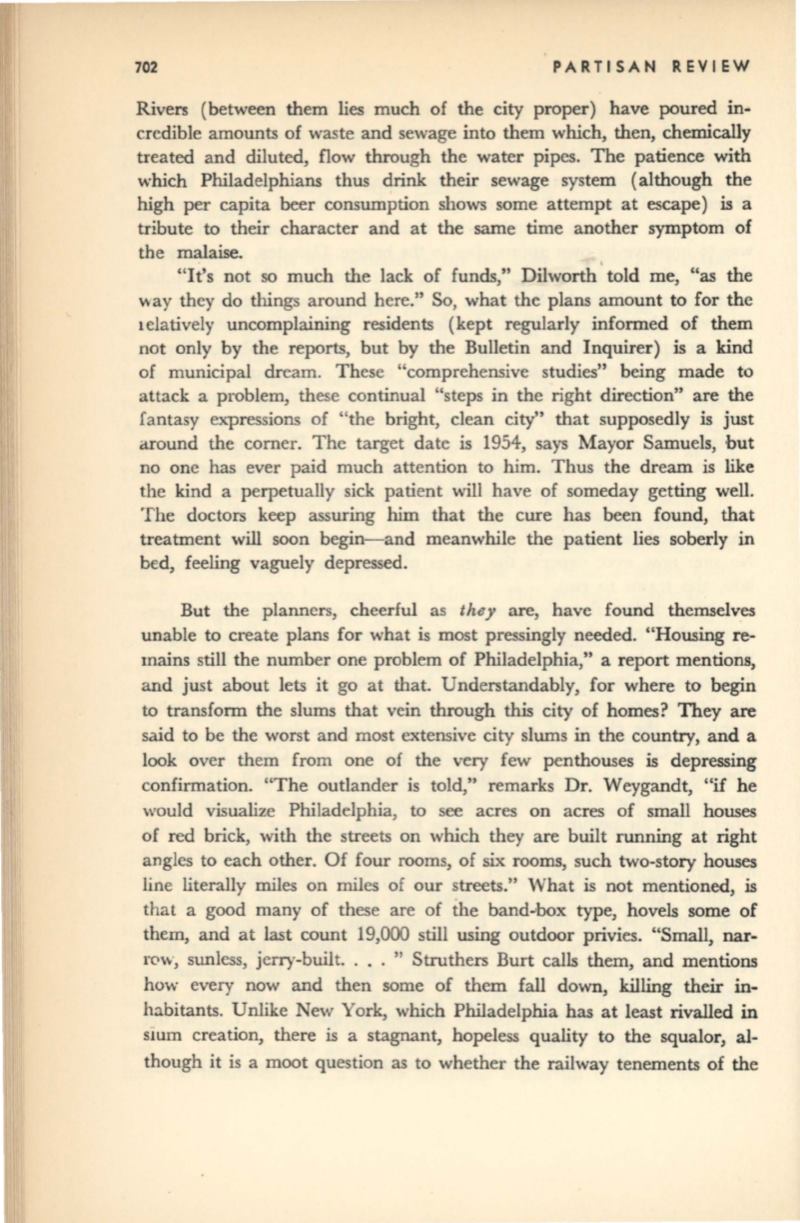
702
PARTISAN REVIEW
Rivers (between them lies much of the city proper) have poured in–
credible amounts of waste and sewage into them which, then, chemically
treated and diluted, flow through the water pipes. The patience with
which Philadelphians thus drink their sewage system (although the
high per capita beer consumption shows some attempt at escape) is a
tribute to their character and at the same time another symptom of
the malaise.
"It's not so much the lack of funds," Dilworth ' told me, "as the
way they do things around here." So, what the plans amount to for the
lelatively uncomplaining residents (kept regularly informed of them
not only by the reports, but by the Bulletin and Inquirer) is a kind
of municipal dream. These "comprehensive studies" being made to
attack a problem, these continual "steps in the right direction" are the
fantasy expressions of "the bright, clean city" that supposedly is just
around the corner. The target date is 1954, says Mayor Samuels, but
no one has ever paid much attention to him. Thus the dream is like
the kind a perpetually sick patient will have of someday getting well.
The doctors keep assuring
him
that the cure has been found, that
treatment will soon begin-and meanwhile the patient lies soberly in
bed, feeling vaguely depressed.
But the planners, cheerful as
they
are, have found themselves
unable to create plans for what is most pressingly needed. "Housing re–
mains still the number one problem of Philadelphia," a report mentions,
and just about lets it go at that. Understandably, for where to begin
to transform the slums that vein through this city of homes? They are
said to be the worst and most extensive city slums in the country, and a
look over them from one of the very few penthouses is depressing
confirmation. "The outlander is told," remarks Dr. Weygandt, "if he
'would visualize Philadelphia, to see acres on acres of small houses
of red brick, with the streets on which they are built running at right
angles to each other. Of four rooms, of six rooms, such two-story houses
line literally miles on miles of our streets." What is not mentioned, is
that a good many of these are of the band-box type, hovels some of
them, and at last count 19,000 still using outdoor privies. "Small, nar–
rC'w, sunless, jerry-built. ... " Struthers Burt calls them, and mentions
how every now and then some of them fall down, killing their in–
habitants. Unlike New York, which Philadelphia has at least rivalled in
slum creation, there is a stagnant, hopeless quality to the squalor, al–
though it is a moot question as to whether the railway tenements of the


